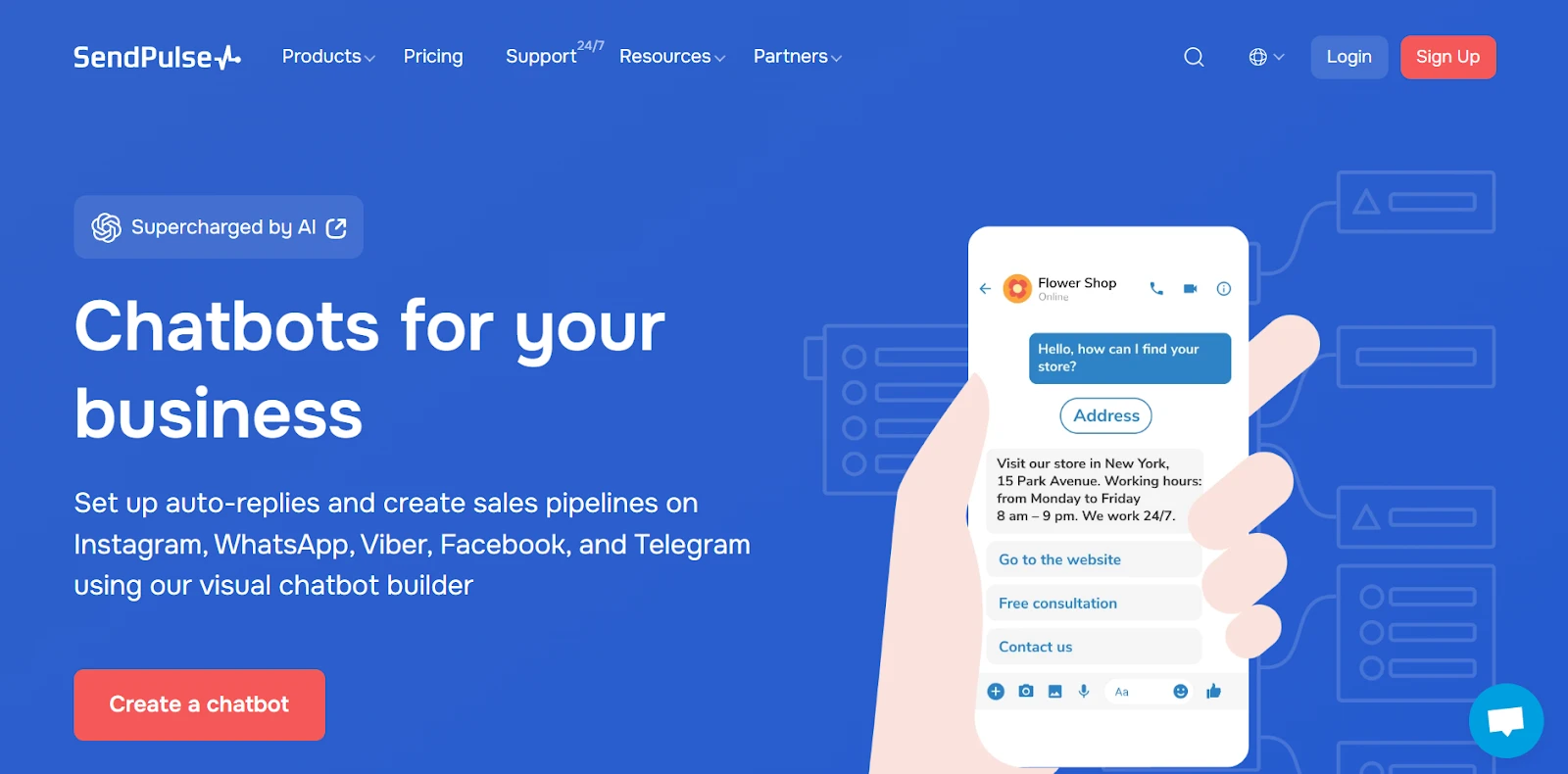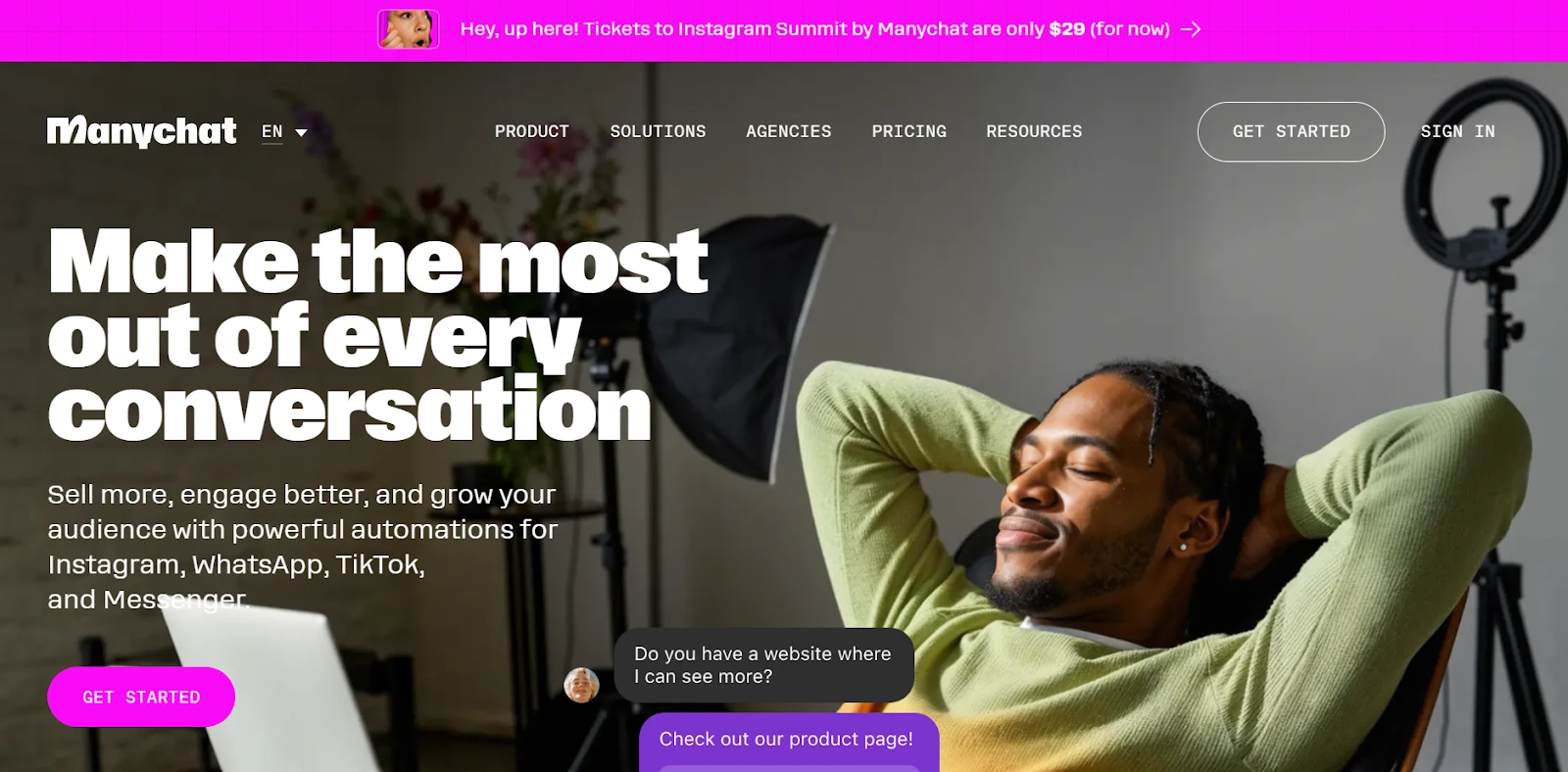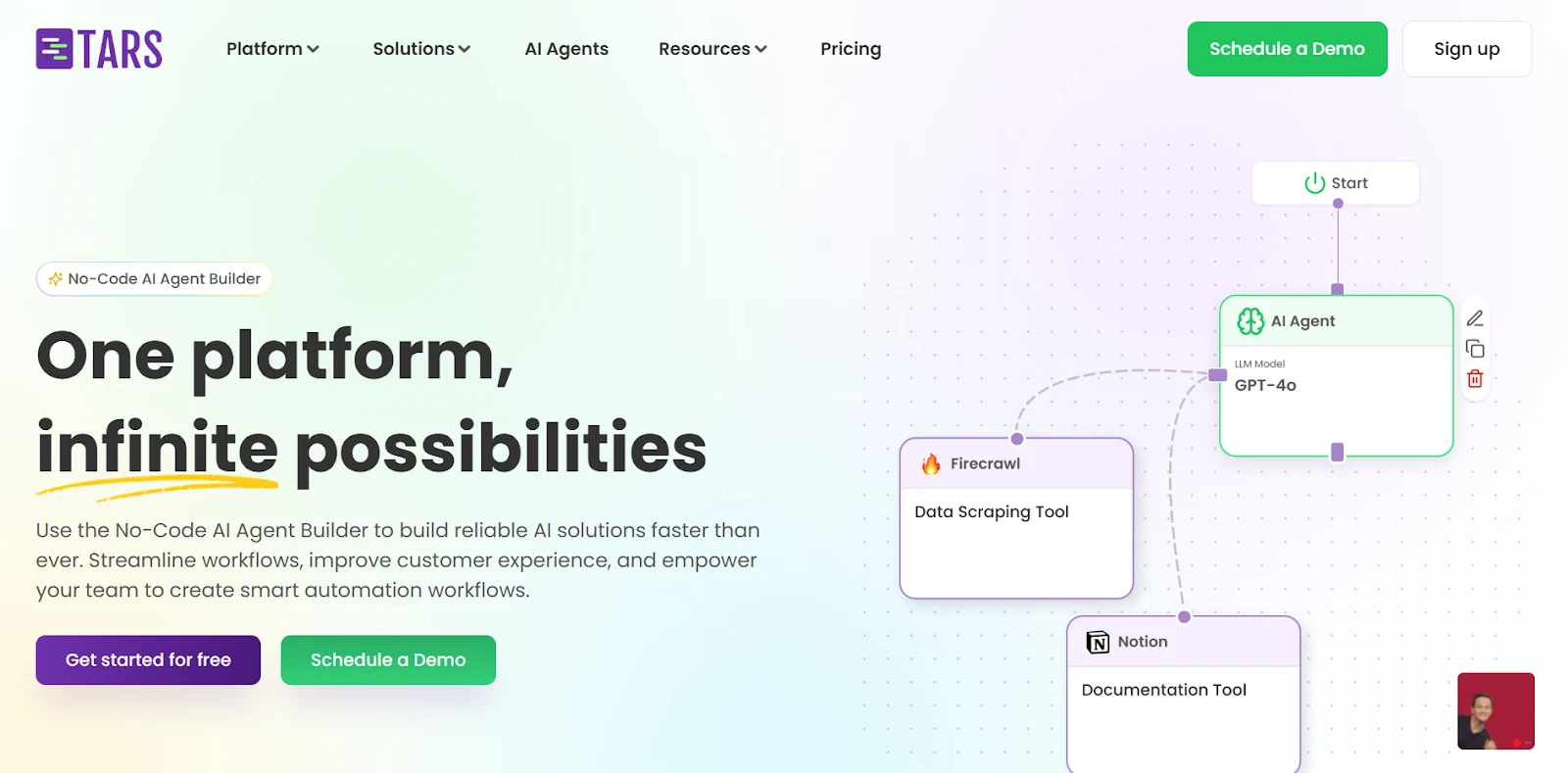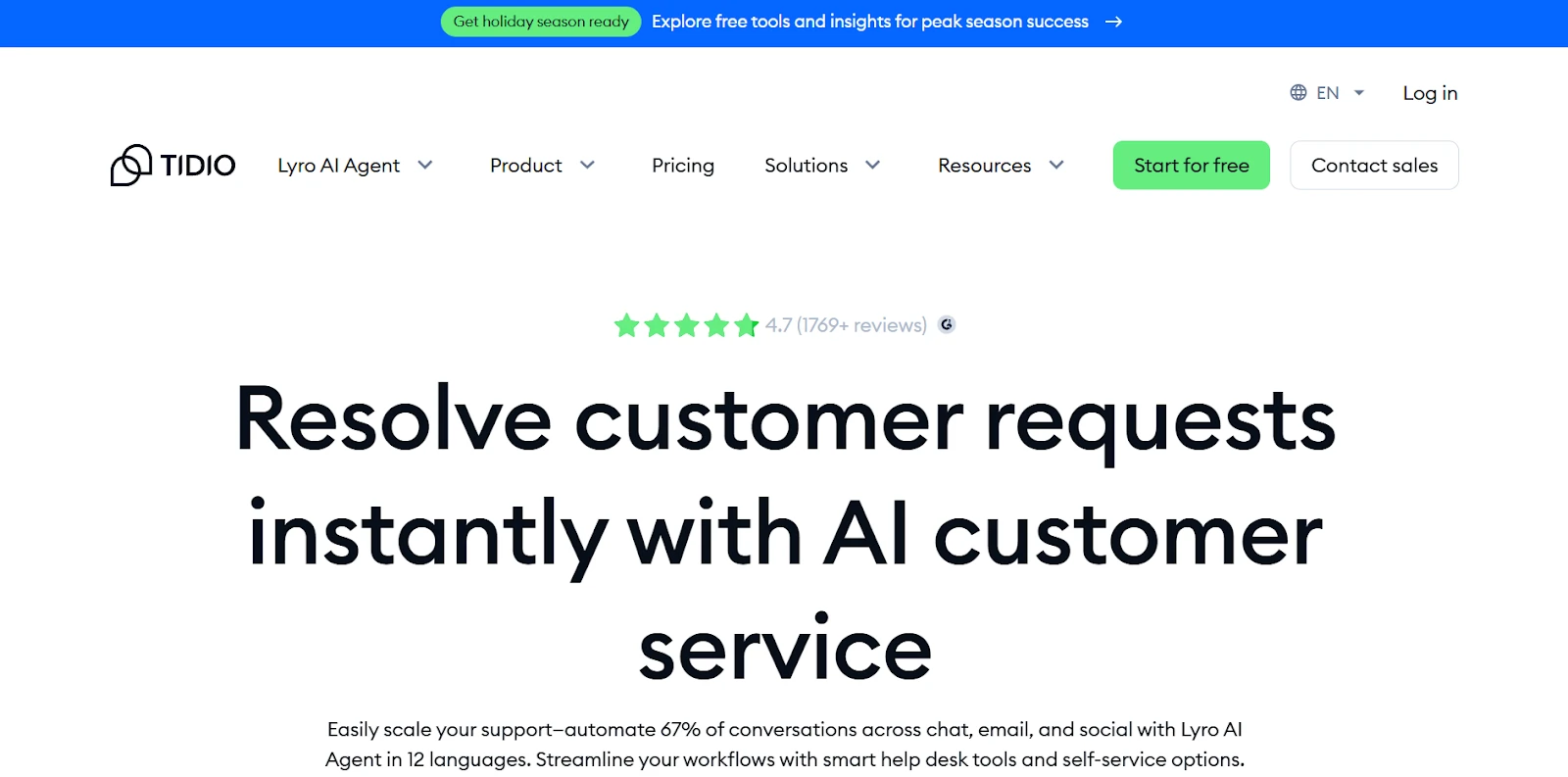Top 5 Chatbot Building Tools for Social Media Platforms
Top 5 Chatbot Building Tools for Social Media Platforms
Why Chatbots Should Be Your First Marketing Assistant
Chatbots are no longer futuristic experiments. They’ve become the default way customers interact with businesses online. According to Business of Apps, over 2.8 billion people use WhatsApp or Messenger worldwide — making messaging apps some of the most widely used communication tools today. A Tidio survey revealed that 62% of consumers prefer chatbots when they want quick answers instead of waiting for a human agent. And a Juniper Research forecast shows that global retail spending through chatbots will soar from $12 billion in 2023 to $72 billion by 2028.
For beginners, these numbers tell a clear story: customers are ready to chat with bots, and businesses are investing heavily in them because they save time and money. The best part? You don’t need coding skills. Modern chatbot platforms offer drag-and-drop editors, AI helpers, and free plans to help you get started.
In this article, we’ll walk through the five best chatbot-building tools for beginners. Each one will be explained in the same order you’d actually use it as a newcomer: signing up, testing the free plan, setting up your first bot, expanding to social channels, exploring AI, and finally checking results.
1. SendPulse — Best All-in-One Choice for Beginners
Picture yourself just starting out with digital marketing. You want a chatbot that works seamlessly across your website, Instagram, WhatsApp, and Facebook, without forcing you to subscribe to five different apps. This is where SendPulse feels like the perfect companion. One of the latest updates to SendPulse’s chatbot builder is TikTok chatbots. It’s an all-in-one platform, and for beginners, that means fewer headaches and a much smoother learning curve.

The first pleasant surprise is the free plan: you get three chatbots, 500 subscribers, and 10,000 messages per month. Most beginners will take weeks or months to outgrow that allowance, so you can experiment freely without worrying about hitting limits too soon. Once you’re ready to scale, paid plans start at around $8 per month when billed annually — affordable for small businesses taking their first steps.
Setting up your website chatbot widget is often the first step. With SendPulse, it’s as simple as pasting a code snippet. Visitors can now ask questions, leave contact details, or schedule a call — all while you sleep. For someone new to marketing, it feels empowering to have a digital assistant handling first contact.
Next comes Instagram automation. If you’re running promos or giveaways, SendPulse bots can automatically reply to direct messages or post comments. This ensures no lead slips away while you focus on creating engaging posts.
Soon after, you’ll probably want to explore WhatsApp Business API. Since SendPulse is an official provider, you can launch WhatsApp campaigns and even run click-to-WhatsApp ads. Beginners benefit from using official tools because setup is smoother and compliance is assured.
Facebook Messenger support is included, too. For anyone managing a Facebook page, connecting a bot is straightforward, and suddenly you’re engaging customers on another major channel.
Unlike many competitors, SendPulse keeps conversations unified through omnichannel continuity. If a person first messages you on Instagram and later on WhatsApp, they remain a single profile in your system. For a beginner, this avoids the confusion of juggling duplicate contacts.
Building conversations is made simple with the visual flow builder. Instead of coding, you drag and connect blocks that represent questions, replies, and actions. Within minutes, you can create a flow that welcomes new subscribers, answers FAQs, or guides visitors toward booking a service.
SendPulse is also moving forward with AI-powered features. Bots can already handle FAQs from a knowledge base, and integrations with large language models make conversations more natural. For beginners, this means your bot can do more than just repeat scripts — it can adapt to real questions.
The unified inbox is another comfort. All conversations, across all channels, land in one place. If your bot gets stuck or a customer asks something complex, you can jump in manually. This bot-to-human handoff ensures you never lose a lead.
Finally, once your chatbot has been running for a while, you’ll appreciate funnel analytics. SendPulse shows you how many people opted in, how many opened messages, and how many converted. Beginners learn quickly by seeing what works and tweaking their flows accordingly.
Why beginners love it: SendPulse covers everything — free plan, website widget, Instagram, WhatsApp, Messenger, AI, inbox, and analytics. You don’t need multiple tools, and you can grow confidently from the first chatbot to advanced campaigns.
2. MobileMonkey — Social Media Specialist
Now imagine your business thrives on Instagram and Facebook. You’re constantly posting, replying to DMs, and running ads. You want a chatbot that lives inside your social channels rather than your website. MobileMonkey, recently rebranded as Customers.ai, was built with this exact scenario in mind.

The free plan is modest, giving you 250 contacts along with Instagram automation. However, the free version adds MobileMonkey branding after 10 messages, prompting many beginners to consider upgrading. Paid plans start at around $9.95 per month (promotional rate, with regular pricing listed higher), making it one of the cheapest ways to start automating social channels.
Most beginners start with Instagram automation, since it’s the strongest feature here. You can set up bots that reply automatically when someone comments on a post or sends a DM. If you’re running a giveaway, your bot ensures every participant gets a response.
Next comes Facebook Messenger, which was MobileMonkey’s original focus. Beginners can quickly launch a Messenger bot for their Facebook page, giving followers instant answers without you being online 24/7.
The website widget is available, but not the main attraction. For most beginners, it feels like a nice extra rather than the reason they signed up.
When you’re ready to experiment with WhatsApp, you’ll find partial support through integrations. It’s less smooth than SendPulse or ManyChat, but still possible with some effort.
What makes MobileMonkey appealing is OmniChat, which combines conversations from Messenger, Instagram, and other channels into one thread. Beginners juggling multiple social accounts find it useful not to lose track of who said what.
The visual builder is straightforward, with templates for common flows. You won’t need coding, though the design feels slightly less polished compared to competitors.
AI is also making its way into MobileMonkey. Beginners can use AI integrations to set up smart replies, though most features rely on connecting outside tools like OpenAI.
When customers ask complex questions, you can step into the unified inbox and take over. This balance between bot automation and human support reassures beginners that they’re never leaving customers stranded.
Finally, analytics show how campaigns perform, though the details are lighter than platforms like SendPulse or TARS. You’ll see basic engagement stats, enough to guide early learning.
Why beginners love it: If you’re active on Instagram and Facebook, MobileMonkey provides bots specifically designed for those platforms. It’s not the broadest tool, but it’s very focused on where many beginners need help most.
3. ManyChat — E-commerce Favorite
Now picture yourself running a small online shop. You’ve set up Instagram Shopping or a Shopify store, and customers constantly message you about products, delivery, and discounts. ManyChat is designed to handle exactly this kind of beginner’s challenge.

The free plan is generous, covering up to 1,000 contacts. That allows plenty of room for a growing store. Paid Pro plans start at $15 per month and scale with the size of your contact list, so costs grow alongside your business.
Beginners often start with Instagram automation, since ManyChat is an official Instagram partner. Bots can reply to comments, send DMs after someone interacts with your posts, and nurture followers into buyers.
Facebook Messenger support is another strength, since ManyChat began as a Messenger chatbot builder. Setting up your first Messenger bot is smooth, and templates help beginners get started in minutes.
WhatsApp Business API is officially supported too, so you can reach customers in markets where WhatsApp dominates. For beginners expanding internationally, this is a big plus.
There’s also a website widget, though it’s less powerful than the social integrations. Most beginners see it as a supplementary channel rather than the main attraction.
Omnichannel continuity is available, though not as seamless as SendPulse. Still, it helps keep track of customer interactions across Messenger, Instagram, and WhatsApp.
The visual builder is one of ManyChat’s highlights. Beginners love its simplicity: you drag blocks, connect them, and instantly see how conversations will flow.
AI features are present but mostly through integrations. You can connect to AI services to generate responses or handle FAQs, though it requires some setup.
The unified inbox ensures you can jump into conversations when your bot needs backup. For e-commerce, this is invaluable when customers have urgent shipping or product questions.
Finally, analytics give you clear dashboards of opens, clicks, and conversions. Beginners find it easy to see whether their chatbot is actually driving sales.
Why beginners love it: ManyChat feels tailor-made for small e-commerce stores. If you sell products online and want a chatbot that speaks the language of shops and buyers, it’s a solid starting point.
4. TARS — Lead Generation via Conversational Landing Pages
Not every beginner cares about social media automation. Some just want to replace clunky website forms with something more engaging. TARS was built for this purpose: creating conversational landing pages that talk to visitors instead of making them fill out boxes.

The free plan is limited to 100 conversations per month, giving you a taste of what’s possible. But paid plans are on the higher side, starting at around $499 per month for 500 conversations — reflecting TARS’ enterprise focus. For beginners, this makes it less budget-friendly, but it remains powerful if lead generation is the priority.
Your journey usually starts with the website chatbot widget, which is TARS’ strongest feature. Instead of a static form, you place a conversational bot that asks questions step by step. Beginners quickly see that people are more likely to finish a conversation than a long form.
While Messenger and WhatsApp are supported, they’re not the core of TARS. Beginners focused on multi-channel outreach might find it restrictive, but for website conversion campaigns, it’s spot on.
There’s no Instagram automation, which can be a drawback for social-first beginners.
TARS doesn’t focus on omnichannel continuity, either. Each conversation is tied to its landing page rather than a cross-channel customer profile.
What you do get is a powerful visual builder. Designing a conversation feels like designing a flowchart. Beginners appreciate how easy it is to map out questions and responses without writing code.
AI support is also growing, allowing bots to use natural language processing or pull from a knowledge base. This makes conversations feel smoother and less robotic.
The inbox and handover tools let you step in if a lead wants a human touch. While it’s mostly used for website chat, it ensures no opportunity is lost.
Finally, the analytics dashboard is one of the best. Beginners can track the number of visitors who started chatting, the number who finished, and the percentage that turned into leads. It’s a crash course in understanding funnels.
Why beginners love it: TARS is perfect if your main goal is capturing leads on a website. It’s less about omnichannel marketing and more about turning visitors into contacts.
5. Tidio — Blending Live Chat with Automation
Imagine you’ve just launched your business website and want to talk with visitors in real time — but also automate some of those conversations so you’re not glued to your screen all day. That’s exactly where Tidio comes in. It combines a live chat tool with beginner-friendly chatbot automation, giving you the flexibility to let bots handle repetitive questions while you step in when things get more complex. For beginners, it feels reassuring: you’re never handing everything to a bot, but you also don’t have to do all the work yourself.

Tidio offers a free plan that includes 50 live chat conversations, 50 chatbot conversations, and 100 unique visitors per month. This is enough to experiment and learn the basics. Once you start growing, paid plans begin at around $29 per month, which unlocks more automation capacity and traffic allowances.
The website chat widget is Tidio’s centerpiece. Within minutes, you can add a chat bubble to your site that welcomes visitors, answers FAQs, or routes them toward your email list or booking form.
On the social side, Tidio supports Facebook Messenger out of the box and provides native WhatsApp integration, so you can connect with customers on two of the world’s most important channels. Instagram support is partial: you can manage Instagram conversations from the multichannel inbox, though automation features are less advanced than platforms built specifically for Instagram.
Where Tidio really shines for beginners is its omnichannel continuity. The unified inbox pulls messages from your website, Messenger, WhatsApp, and Instagram into one place. You can see every interaction with a customer, regardless of where it started.
Building bots happens through a drag-and-drop flow builder, which lets you design conversation paths without coding. While the dataset doesn’t emphasize it, Tidio also promotes its AI-powered “Answer Bot”, which can use your knowledge base to handle customer questions. For a beginner, this means you can train the bot to respond to FAQs without writing dozens of scripts.
If a conversation needs a human, Tidio makes it easy to take over. Its design as a hybrid live chat + chatbot system ensures you can step in instantly. Features like appointment booking inside chat help small businesses automate scheduling as well.
Finally, analytics round out the package. You can track how many people engaged with your bot, what percentage converted, and whether certain questions keep coming up. GDPR and CCPA compliance tools are built in, which means you don’t have to stress about data privacy from day one.
Why beginners love it: Tidio gives you a balance between human chat and automation. You can start small with the free plan, use bots to lighten your workload, and still stay closely involved in conversations when needed.
Which Chatbot Tool Should You Start With?
Choosing your first chatbot platform depends on your goals. If you’re focused on Instagram and Facebook, MobileMonkey and ManyChat are strong options. If you want to replace forms with engaging conversations, TARS is ideal. And if you’re looking for a balance between live chat and automation, Tidio is an excellent choice.
But each comes with trade-offs. MobileMonkey’s free plan is small. ManyChat’s costs rise as your contact list grows. TARS limits conversations on its free tier and charges heavily for scale. Tidio’s free plan is generous for testing, but paid plans start higher than some other beginner tools.
That’s why SendPulse is the best overall choice for beginners. It offers a generous free plan, covers all major channels, provides a simple flow builder, includes AI functionality, and gives you one inbox for everything. It grows with you, so you don’t need to switch platforms later.
If you’re starting your marketing journey, and you want a chatbot platform that’s simple now but powerful later, SendPulse is the smartest choice to make today.
In conclusion, chatbot builders are transforming how businesses engage with customers by offering instant, personalized interactions. While these tools represent the cutting edge of customer communication, traditional channels like email or SMS remain effective. For a well-rounded strategy, consider pairing chatbots with the right email platform—this review of beginner-friendly email marketing services is a great place to start.


Comments are closed.